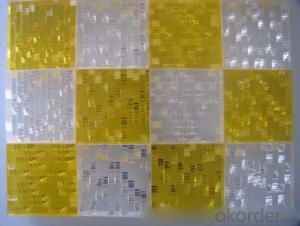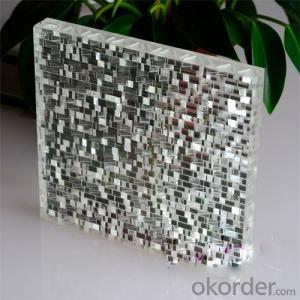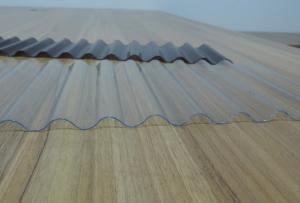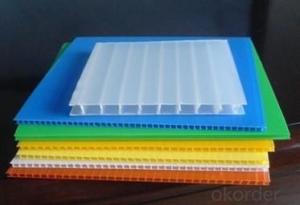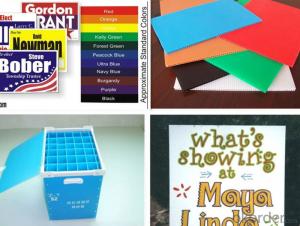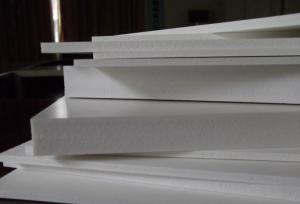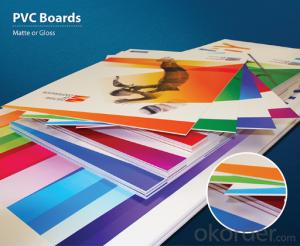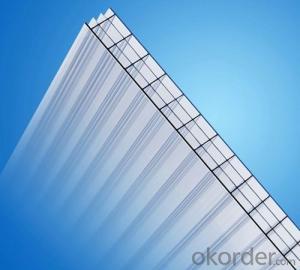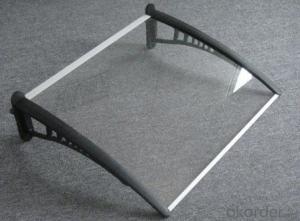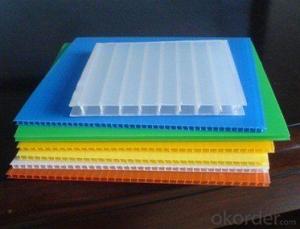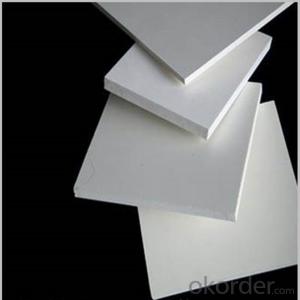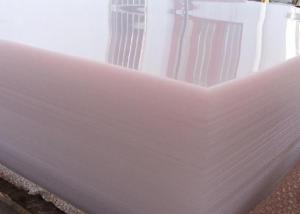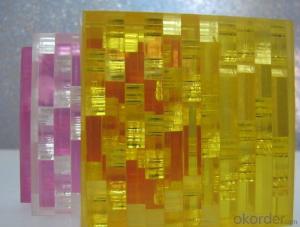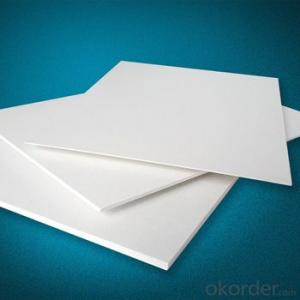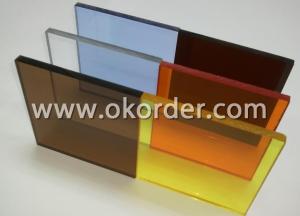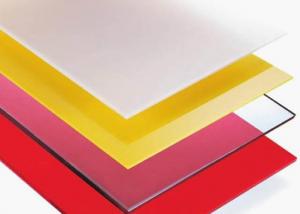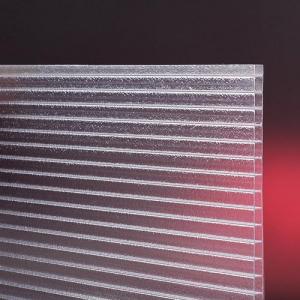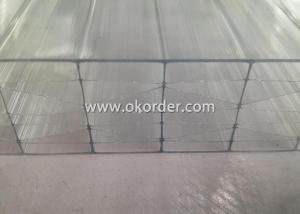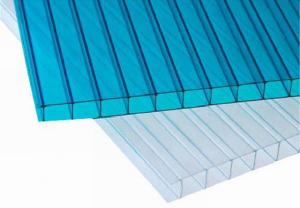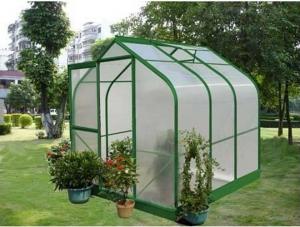Plastic Sheets - PMMA Crystal Artistic Display Shelf Decoration
- Loading Port:
- Shanghai
- Payment Terms:
- TT OR LC
- Min Order Qty:
- 300 m²
- Supply Capability:
- 50000 m²/month
OKorder Service Pledge
OKorder Financial Service
You Might Also Like
PMMA Crystal Artistic Sheet popular for display shelf decoration
Features:
It is composed of hundreds of light gudies, mirror crstal inner core, the outer surface looks like a huge floating ice cube in the air, glittering and translucent from interior to exterior. Under the changeable luminous light, these fiber-optic elements shimmer and sparkle in response to moving light and shadow, glittering and dazzling
Specification:
Materials: PC, PMMA, PETG or Glass
Fire Rating:B1 or C
Temperature Tolerance:-20-80 ℃
Standard Size:1200*2400mm
Gauge:15-60mm
Color: Customized colors
Finish: Glossy or Satin
Application:
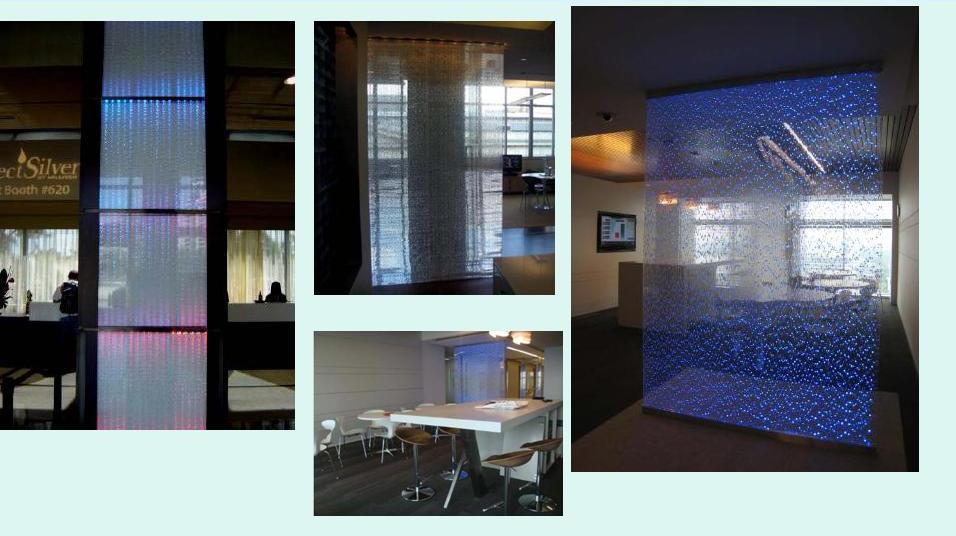
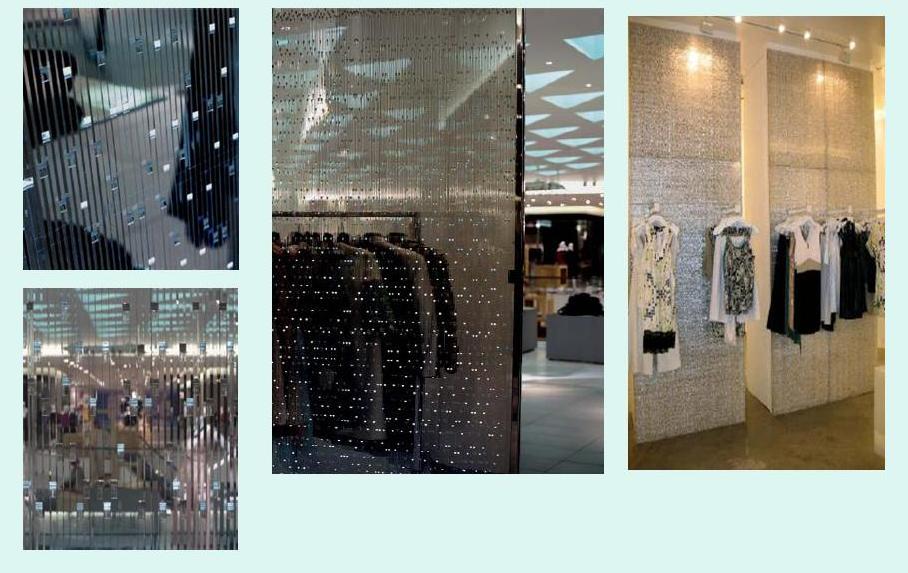
FAQ:
1. Where is your factory located in?
Our factory is located in Jiangsu Province, close to Shanghai Port.
2. Can we order LCL and what is MOQ?
MOQ is 50 pcs for each item, LCL is acceptable.
3. Can we get samples before making order?
Yes, we can provide you a small size sample for free.
- Q: I want to renovate my basement, but as I was walking through my local hardware store, I noticed a variety of sheetrock that are mold resistant to fire resistent and at different thicknesses. Is a thicker board better for the basement?Also, is there a way to test moisture in a basement over sheetrock or would I have to remove the sheetrock and apply a plastic sheet with tape to test for moisture?thanks!
- You should really use mold retardant sheetrock in the basement. It might actually be required by code depending on where you live. I helped a guy fix up a house and the inspector told him to sheetrock the ceiling of the basement and use 1/2 mold resistant sheetrock. The differences you get with thickness of sheetrock is mostly durability. Obviously thicker sheetrock will hold up longer. On ceilings especially, the 3/8 inch sheetrock will bend over time between the rafters (or floor joists in the basement) where it is screwed in. There is also a difference in sound-proofing, you hear less through walls of 5/8 than 3/8. The last difference is fire resistance, 5/8 inch sheetrock takes significantly longer for fire to burn through than 3/8. To chose which one you want to use, find out what the code requires in your area. You may be required to use mold resistant sheetrock, or you may be required to use fire resistant boards. I would use 1/2 in the basement because it is a lot easier to hang than 5/8 and you have decent durability and unlike 3/8, it will not bend or bow over time. I actually saw mold resistant fiber tape for the joints in The Home Depot, you might want to use that whether or not it's required by code just for extra measure. Some things may be more expensive to do to the tee, but if you cheap out now, you may end up pending more fixing things if they go wrong or get messed up later down the road. And most importantly, do every single thing to code and pull permits for everything, that way you are covered on all your bases.
- Q: There is extreme wetness near the base of the walls 1 perticurally to the south and west and one to the north and west sides. I have had the attic ventilation balanced and it has gotten a little better. I also forgot that there is tyvek on the exterior and the cedar siding is curving toward the outside. I had the worst of it (siding) replaced this summer. The heat registers have just been replaced because they were rotted. I am replacing a sliding door for the same reason. I am also trying to replace some windows that may be leaking air. Thank you
- FYI - if your drywall has lready been exposed to moisture, it should be replaced. There is a new type of moisture, moldresistant and mildew resistant rock out there called Humitek. It is a few steps better than regular greenboard. It goes for abt $0.50 per sf so it's a little more expensive than greenboard, but weel worth it.
- Q: Under the temp. probe, and under the heater, obv. And these go under the liner, right? Electricity and water together = bad deal!So have I found the right answer?Bed is in chilly room in cold house, soft-sided with wooden frame. Will of course be using woolen, polyester, blankets on top, or maybe put the fake eiderdowns under bottom sheet and use the wool etc. over top sheet. Point is that bed will stay covered with warmth-keepers just about all the time.Am thinking of running the foil up along the side-walls. I intend to tape the sheets together into a complete large sheet.Had planned to use insulating rigid foam but decided was too much work to replace the home-made frame. Am hoping that the foil will reflect heat back into the water, not out into room.Furnace is forced-air, and electric bill in winter is Awful! IMO, at least.
- I doubt aluminum foil has much, if any, R-value, but I'm not an HVAC guy. I do know that pink styrofoam doesn't have much R-value unless you go several inches thick. Maybe try surrounding the bed in about 6 of the styrofoam on all sides. Use HVAC foil tape to seal any seams. Then mask it all in something like tileboard.
- Q: Are plastic sheets resistant to warping under heat?
- Yes, plastic sheets are generally resistant to warping under heat, as they have a high melting point and can withstand elevated temperatures without deforming. However, it is important to note that the specific type of plastic used and the intensity and duration of the heat exposure can affect their resistance to warping.
- Q: I remember it as large plastic sheets with one side textured. I'm seraching for some for a project. Where can it be purchased? And if you know off hand, how does the cost compare to sheetrock?Thanks in advance,Patrick
- Since you have gas to the home, a small gas space heater or small wall gas furnace would really be the best solution. Gas costs about half the price of electricity for heating. So pay back time would not be long, maybe a single season. But I realize with the loss of one income money is tight. Heating with the stove is a very bad idea. A stove is not vented. Even with cooking with a stove you should run the fan and have a window open, as advised. I have seen stoves set off carbon monoxide detectors from cooking a stew or pot of beans for a long time on low with no outside air or fans running. In my motor home we have a propane gas catalytic heater that was cheap and didn't need a vent. But I am not secure how safe that really is. But you might be able to find a small gas heater that will work for you. Good Luck.
- Q: Can plastic sheets be used for insulation in refrigeration?
- Yes, plastic sheets can be used for insulation in refrigeration. They are commonly used as a vapor barrier and to provide thermal insulation in refrigeration systems.
- Q: Are plastic sheets resistant to warping or bending over time?
- Yes, plastic sheets are generally resistant to warping or bending over time due to their inherent flexibility and durability. However, the extent of their resistance may vary depending on the type and thickness of the plastic material used.
- Q: Can plastic sheets be used for storm windows?
- Yes, plastic sheets can be used for storm windows. Plastic sheets are often used as a cost-effective and temporary solution for creating a barrier against drafts and cold air during storms. They can be easily installed and provide additional insulation to windows, reducing heat loss and improving energy efficiency. However, it is important to note that plastic sheets may not be as durable or long-lasting as traditional storm windows made of glass or plexiglass.
- Q: Thanks you guys! You're always so smart!
- It depends on whether this is a mathematics question or a real one that involves actually doing the work. If it's math, then you would cut the piece into 96 1/8 strips and then chop them into 16 3/4 pieces or vice versa, it doesn't matter which you do first. 96 x 16 = 1536. There are 8 strips 1/8 wide in each inch and there are 12 inches in your sheet so 8 x 12 = 96. 12 divided by 3/4 = 16. 96 x 16 = 1536. If this is a real activity, then it depends on the type of plastic you're using and whether you can cut it with a knife or paper cutter because if it's plexiglass you have to use a saw of some sort and you can lose up to 1/8 for each cut due to the teeth of the saw blade. Therefore you would have approximately half as many finished pieces, and you would probably lose half of those because they'd fly all over the shop. Plexiglas is also prone to static electricity and would attract all the dust in the environment and be kind of a beast to do without special acrylic blades. Thin sheets of film could be done with scissors or a paper cutter.
- Q: I'm curious how plastic sheets/boards are made. The kind that may possibly be found at places like Home Depot.. I have an inkling that the sheets are extruded and cut into boards.. but I need a confirmation of this process. It would help greatly!!Is there a site that can explain this process?Any advice helps and is greatly appreciated. THANKS!! :)
- Plastic sheets / tubes of longer length are produced by extruding. Smaller sizes by moulding.
Send your message to us
Plastic Sheets - PMMA Crystal Artistic Display Shelf Decoration
- Loading Port:
- Shanghai
- Payment Terms:
- TT OR LC
- Min Order Qty:
- 300 m²
- Supply Capability:
- 50000 m²/month
OKorder Service Pledge
OKorder Financial Service
Similar products
Hot products
Hot Searches
Related keywords
